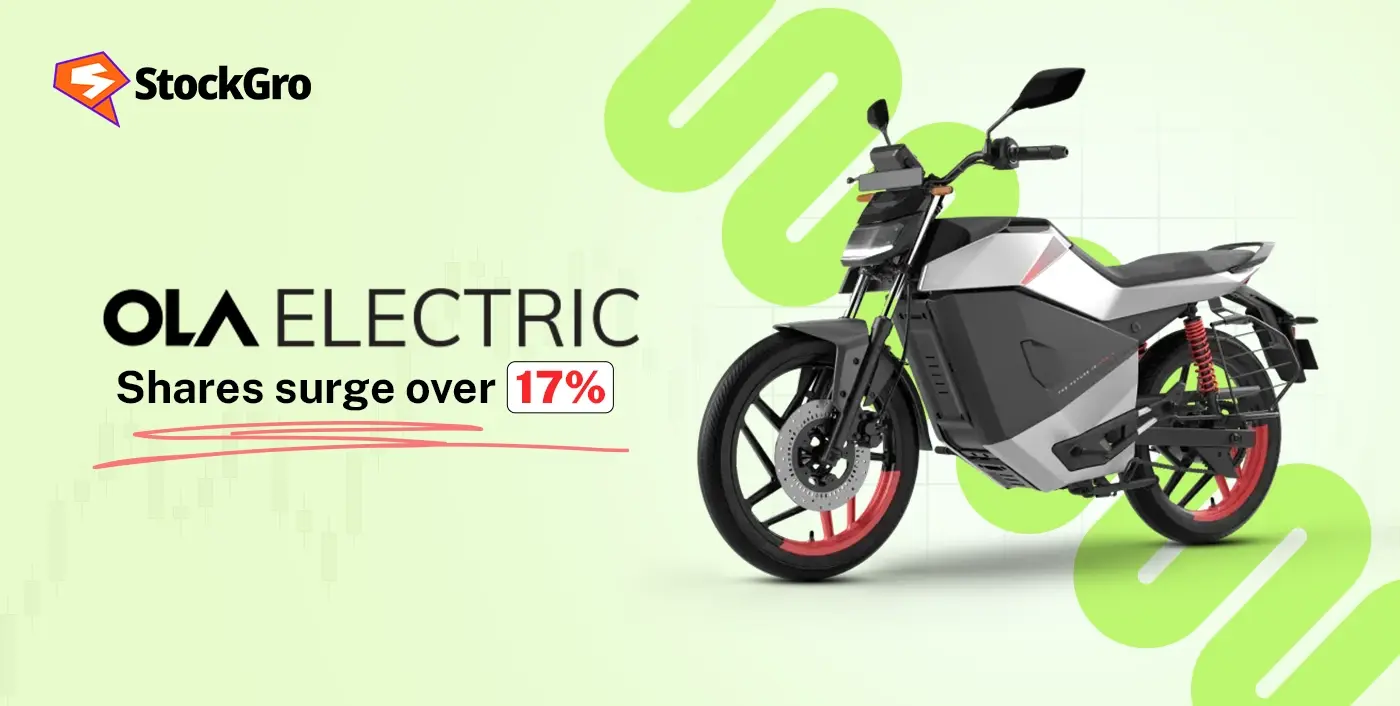
Ola Electric has been making headlines recently, with its share price surging 17% despite posting a consolidated net loss of ₹428 crore for Q1 FY26. How is this possible, and what does this mean for the company’s future? Let’s take a deeper look into the numbers, performance, and future outlook of Ola Electric.
Strong Q1 Performance: A Mixed Bag
In the April-June quarter of FY26, Ola Electric reported total revenue of ₹828 crore, which is a significant 35.5% increase compared to the previous quarter. However, this is still a 49.6% decline when compared to the same quarter last year. The company’s net loss for the quarter stood at ₹428 crore, a sharp increase from ₹347 crore in Q1 FY25 but an improvement from ₹870 crore in Q4 FY25. This marks a notable sequential reduction, which is an encouraging sign for the company.
Also read: Anthem Biosciences IPO: All You Need to Know About
| Metric | Q1 FY26 | Q1 FY25 | Q4 FY25 |
| Revenue from operations | ₹828 crore | ₹1,644 crore | ₹611 crore |
| Net loss | ₹428 crore | ₹347 crore | ₹870 crore |
| Vehicle deliveries | 68,192 units | 1,25,198 units | 51,375 units |
Data sourced from Ola Electric reports
Key Operational Improvements
Despite the widening net loss, Ola Electric’s stock surged by 17% due to improvements in several operational aspects:
1. Sequential Revenue Growth
Ola Electric’s revenue from operations grew 35.5% sequentially from ₹611 crore in Q4 FY25 to ₹828 crore in Q1 FY26, a positive sign of recovery after consecutive declines in the previous quarters.
2. Auto Segment Turns EBITDA Positive
One of the key highlights for Ola Electric in Q1 FY26 was the auto segment turning EBITDA positive for the first time. This shift represents the company’s ability to achieve operational profitability in its core segment, a significant achievement considering its past losses.
3. Margin improvement
Ola Electric achieved its best gross margin of 25.6% in Q1 FY26, thanks to better cost control and efficiencies from its vertically integrated manufacturing model. This is a big win for the company, which has struggled with profitability due to high production costs.
4. Cost-Cutting Strategies
The company’s “Lakshya” cost-cutting programme has resulted in a reduction of auto operating expenses from ₹178 crore per month to ₹105 crore. This reduction has helped improve overall margins and narrowed losses, offering a glimpse of the company’s path to breakeven.
Also read: Vedanta Shares Drop After Viceroy Research Allegations
FY26 Targets and Projections
Looking ahead, Ola Electric has set ambitious but achievable targets for FY26. The company expects to sell between 3.25 lakh to 3.75 lakh vehicles, with revenue projections ranging from ₹4,200 crore to ₹4,700 crore. Ola Electric also expects its auto EBITDA to remain positive from Q2 FY26 and rise above 5% by the end of the year.
Additionally, the company aims to continue cutting costs, with a focus on maintaining its operating expenses even if vehicle volumes double. Ola has allocated ₹300 crore for auto capital expenditure (capex) for the rest of FY26 and plans to raise ₹400-500 crore in funding to bridge the gap towards breakeven by the end of the year.
You may also read: TCS Q1 Results: Reports 3% Revenue Drop – First YoY Decline Since FY2
Challenges and Risks: Navigating Uncertainties
Despite the positive operational developments, Ola Electric faces several challenges:
- Macroeconomic risks: Global supply chain disruptions and the rising competition in the electric two-wheeler market could pose challenges to Ola Electric’s performance.
- Rare earth magnet supply issues: Ola Electric also flagged concerns around the long-term availability of rare earth magnets, which are essential for its motor production. However, the company has adopted strategies to mitigate these risks, including sourcing magnets from multiple countries and developing rare earth-free motors.
- Increasing competition: While Ola Electric was once the leader in the Indian EV market, it now finds itself in third place, trailing behind TVS Motor and Bajaj Auto. The growing competition adds pressure to maintain its market share.
Future Outlook: Optimism Builds Despite Risks
Despite these challenges, investor optimism remains strong. The market is beginning to price in a potential shift towards profitability, with improvements in margins and cash flow narrowing. Ola Electric’s ability to turn EBITDA positive in the auto segment and its plans for the future continue to fuel confidence in the company’s future growth.
Conclusion
While Ola Electric’s Q1 FY26 results show a widening net loss, the company’s focus on improving operational efficiency, reducing costs, and pushing for profitability has created a sense of optimism in the market. With a 17% jump in share price, the company’s future growth will largely depend on executing its plans for FY26 and maintaining its focus on driving profitability.

